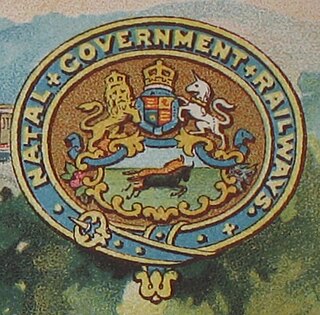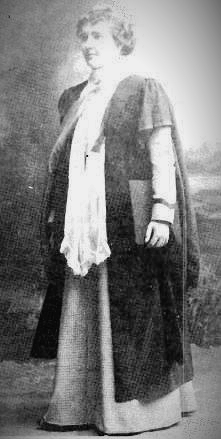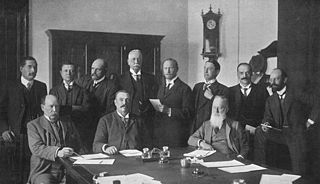Related Research Articles
The following lists events that happened during 1910 in South Africa.

The Colony of Natal was a British colony in south-eastern Africa. It was proclaimed a British colony on 4 May 1843 after the British government had annexed the Boer Republic of Natalia, and on 31 May 1910 combined with three other colonies to form the Union of South Africa, as one of its provinces. It is now the KwaZulu-Natal province of South Africa.

The Natal Government Railways (NGR) was formed in January 1877 in the Colony of Natal.
The South African Railways Class 2C 4-6-2 of 1910 was a steam locomotive from the pre-Union era in the Colony of Natal.
John Dow Fisher Gilchrist (1866–1926) was a Scottish ichthyologist, who established ichthyology as a scientific discipline in South Africa. He was instrumental in the development of marine biology in South Africa and of a scientifically based local fishing industry.

Mabel Palmer (1876–1958) also known as Mabel Atkinson in her first career, was a British-born, suffragist, journalist and lecturer. After her marriage, she began a second career as a South African educator and academic, using her married name. One of her most noted accomplishments came after her retirement from teaching, when she spearheaded a movement to provide university education for non-white students. After providing free courses in her home for a decade, she became director of the segregated courses offered by the Natal University College, serving from 1945 to 1955. After her second retirement, Palmer continued publishing until her death in 1958.

The Industrial Workers of the World (South Africa) or IWW (SA) had a brief but notable history in the 1910s-20s, and is particularly noted for its influence on the syndicalist movement in southern Africa through its promotion of the IWW's principles of industrial unionism, solidarity, and direct action, as well as its role in the creation of organizations such as the Industrial Workers of Africa and the Industrial and Commercial Workers' Union.

The National Convention, also known as the Convention on the Closer Union of South Africa or the Closer Union Convention, was a constitutional convention held between 1908 and 1909 in Durban, Cape Town and Bloemfontein. The convention led to the adoption of the South Africa Act by the British Parliament and thus to the creation of the Union of South Africa. The four colonies of the area that would become South Africa - the Cape Colony, Natal Colony, the Orange River Colony and the Transvaal Colony - were represented at the convention, along with a delegation from Rhodesia. There were 33 delegates in total, with the Cape being represented by 12, the Transvaal eight, the Orange River five, Natal five, and Rhodesia three. The convention was held behind closed doors, in the fear that a public affair would lead delegates to refuse compromising on contentious areas of disagreement. All the delegates were white men, a third of them were farmers, ten were lawyers, and some were academics. Two-thirds had fought on either side of the Second Boer War.
The South African Typographical Union (SATU) is a trade union representing workers in the printing and media industries in South Africa.
Henry William Sampson, OBE, often known as "Sammy", was an English-born South African trade unionist and politician.
James Dominic Francis Briggs was an Australian-born South African politician and trade unionist.
The Amalgamated Union of Building Trade Workers of South Africa (AUBTWSA) is a trade union representing workers in the construction industry in South Africa.
Peter Whiteside was an Australian-born South African trade union leader and politician.
The Transvaal Independent Labour Party (ILP) was a political party in the Transvaal Colony.
The Natal Labour Party (NLP) was a social democratic political party in the Natal Colony.
The Suid-Afrikaanse Onderwysers Unie (SAOU), sometimes translated as the South African Teachers' Union, is a trade union representing principally Afrikaans-speaking teachers in South Africa.
Tom Matthews was an English-born trade unionist, active in South Africa and the United States.
Archibald Crawford was a Scottish-born South African trade union leader.
John Joseph Ware, sometimes known as "Honest John", was an Australian trade unionist, who became a politician in South Africa.
Edward Cresswell was an English-born South African trade unionist and political activist.
References
- ↑ Olsen, Rider Fraser (1933). Who's Who in Natal. Knox Printing and Publishing.
- 1 2 3 Gitsham, Ernest; Trembath, James H. (1926). A first account of labour organisation in South Africa (PDF). Durban: E. P. & Commercial Printing. Retrieved 11 April 2021.
- ↑ Ticktin, D. (1973). The Origins of the South African Labour Party: 1888-1910 (PDF). Cape Town: University of Cape Town. Retrieved 21 April 2021.